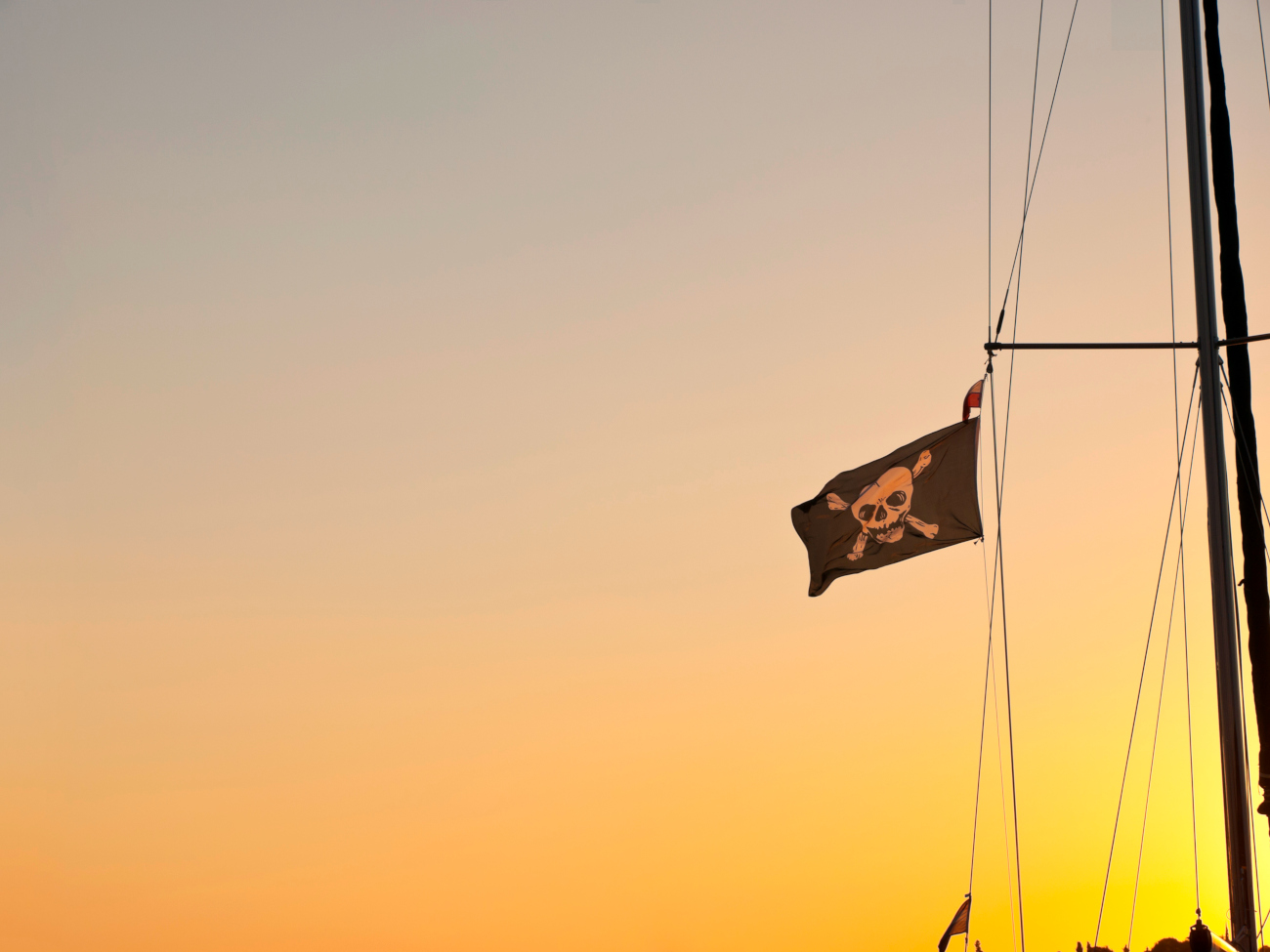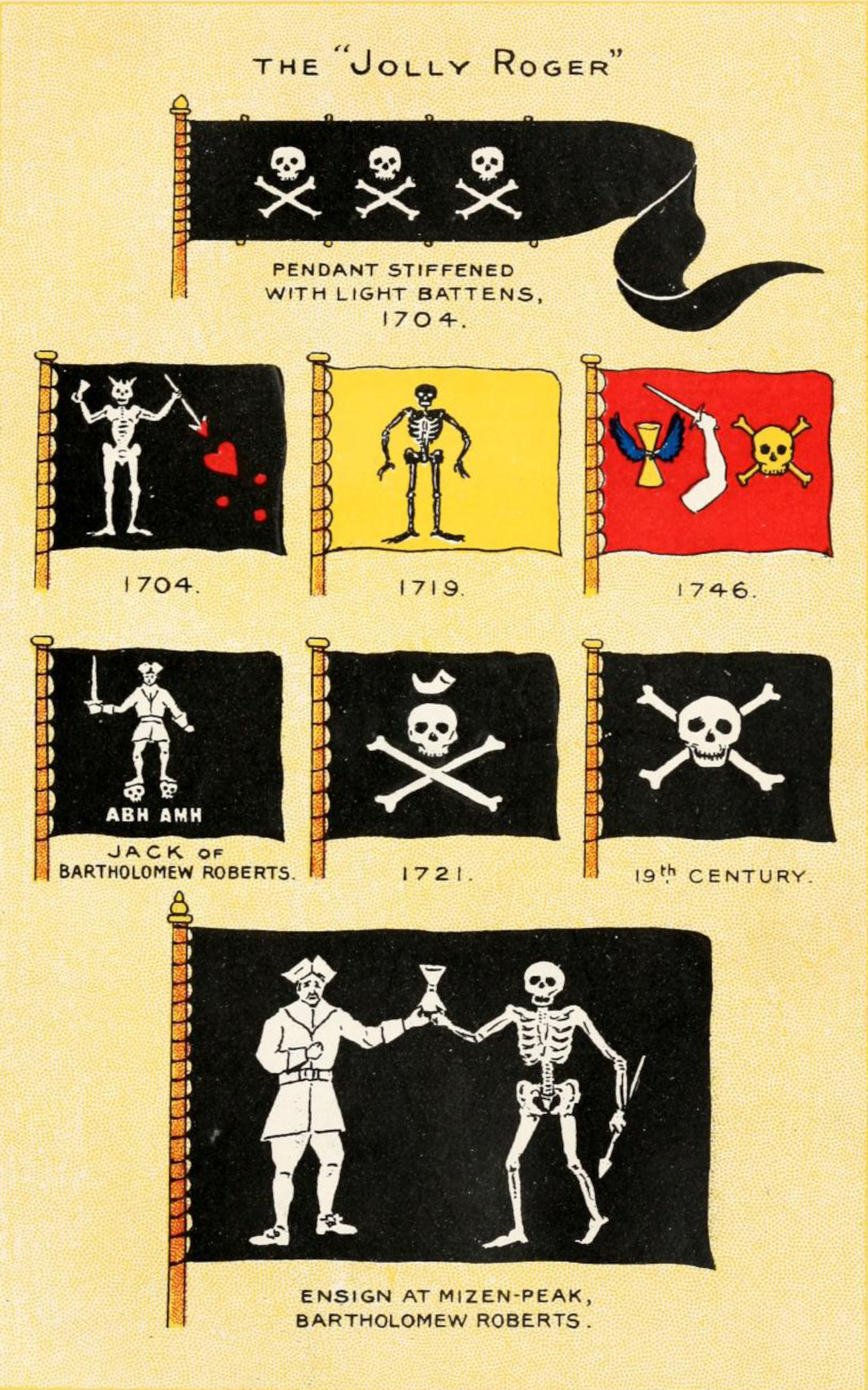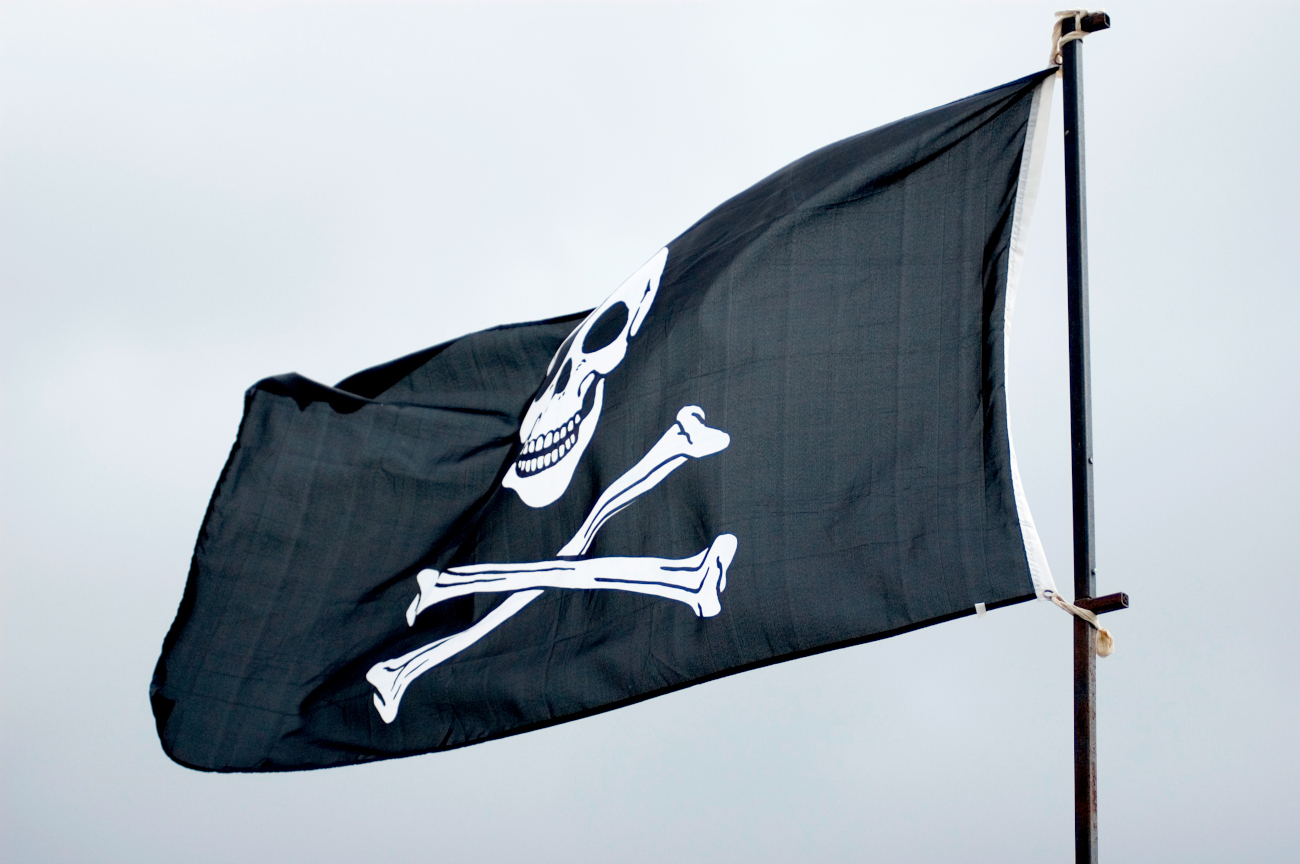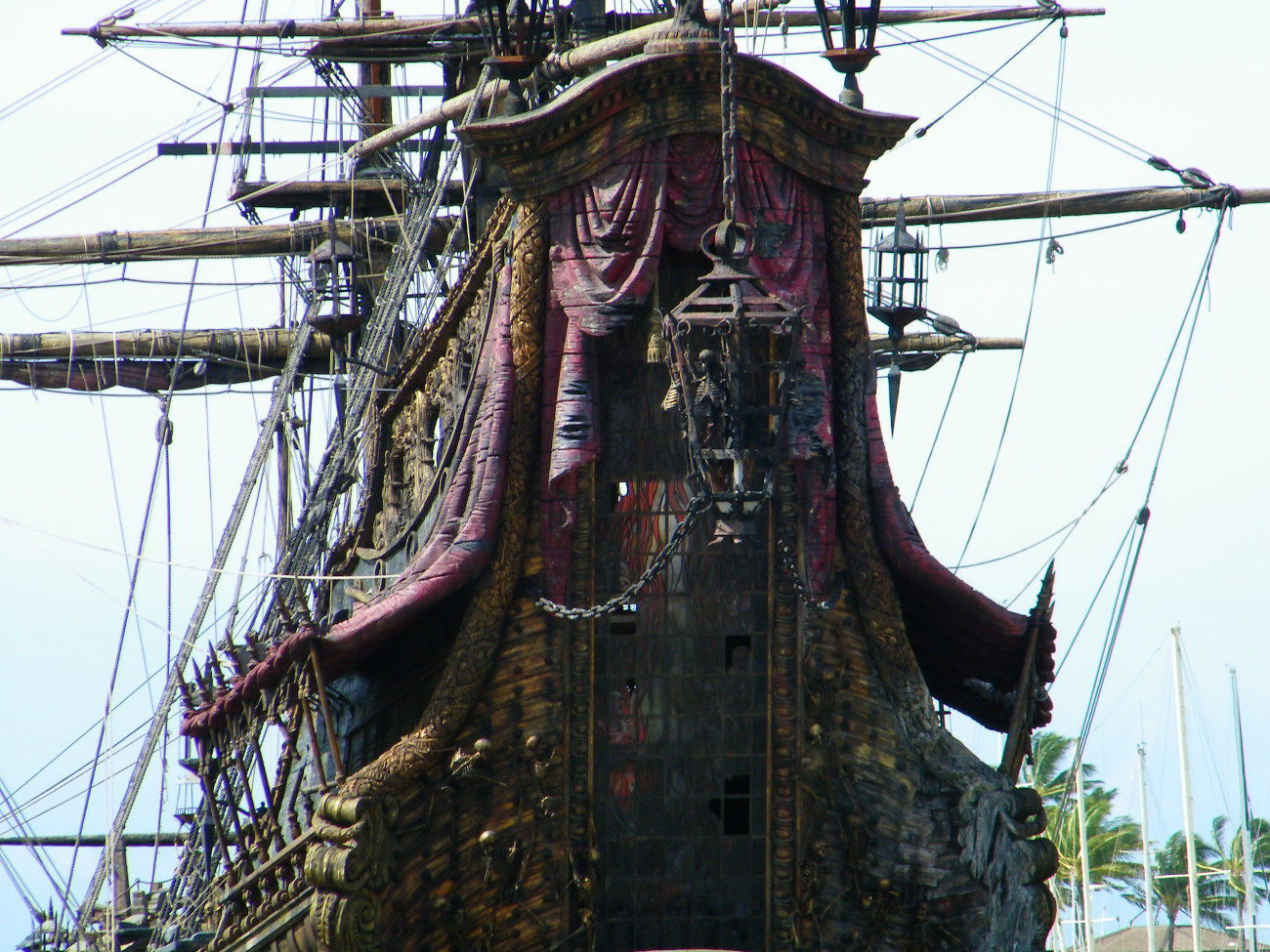In the clear salt-scented sea air, a black flag whips back and forth, and the hollow, eyeless image of a skull seems animated as if the skull itself is actually gazing out to the oncoming ships. Upon merchant ships or passing sea vessels seeing this flag, the meaning was immediately recognizable — pirates. For us living in the modern era, the image of the black flag with skulls and bones is recognized as the classic pirate emblem, it’s almost a cartoon or caricature of itself. Yet hundreds of years ago, the image meant serious business that cost people money and their lives. What’s even more different is that there wasn’t just one pirate flag. The meanings of pirate flags were wide and varied. Just like any group of people, there was a complex system and an array of flags that were deeper than the ocean floor with meaning.

The term Jolly Roger doesn’t seem to come until later. Again, a lot of assumptions are made among historians, but many of them think that French privateers called the flag Jolly Roger (Jolly Rouge, rouge meaning red) because the name symbolized the fate of their red coat British opposition, (the French and English were fierce enemies at this time).
What we know of pirate flags comes from merchant logbooks, European naval vessels, and newspaper articles of the era, so there is little direct documentation from pirates themselves to give the world the full explanation of their flags. The somewhat recent documentation in the 19th and 20th centuries wavers with various theories making accuracy as mythical as buried treasure.

What is clear is that the variation in flags increased after the War of the Spanish Succession in 1714 and the onslaught of the Golden Age of Piracy between the late 17th and early 18th centuries. During this period, pirates took up a level of creative license.
Black and red flags identified pirates, but the images on flags varied from pirate to pirate. Even the colors had different meanings. Black symbolized death, while red meant no quartering or no mercy — but honestly don’t those two meanings have the same end result? Skulls, fire, weapons (swords, knives, or daggers), the hourglass of time, naked figures, devils, hearts, and bones were common symbols used to convey the fate of anyone who resisted that pirate ship’s demands.

Here are just some of the few meanings behind the most popular symbols used on pirate flags.
A red skeleton — Made famous and associated with 18th century English pirate Edward Low, this symbol had a bloody and gruesome meaning. Low’s reputation provoked bloodshed, so the symbol encapsulated Low’s prior behavior. Other pirates also used his flag to convey that death would be a bloody, gruesome, and painful demise.
Hourglass — It didn’t matter if it was half full or half empty, the hourglass meant one thing on all pirate flags — time for those who opposed the pirates was running out. They were essentially facing the end of their life.
Chalice or Goblet — This symbol meant that pirates were toasting death or the devil.
Blood droplets — Those who opposed or resisted the pirates faced a slow and painful demise.
Skeleton with a crown or horns — This is always connected and linked back to the devil, demons, or Satan.
Weapons — Having weapons on the flag meant that pirates were ready and willing to engage in combat.
Initials — Either representing the captain himself or his enemies, think of it as a fancy monogram.
Skeletons, skulls, and bones — These symbols all meant one thing —death.

Some pirates had multiple images associated with themselves. The flag we all know so well — the skull with two crossed bones — was not that of Black Beard. This now classic image was made famous by two vicious pirates named Samuel “Black Sam” Bellamy and Edward England.
During the Golden Age of Piracy, flags were like a calling card — identifying the captain of the ship as well as the reputation of the pirate. If a pirate had a strong and frightening enough reputation, many raids never even had fights. Most sailors navigating merchant ships weren’t soldiers, and clashing with pirates was a risk to the ship and its crew. It was easier to surrender than fight a pirate with a powerful or violent history.

Mystery still lingers about Black Beard’s actual flags, but as mentioned reputation can lead to many successes. His reputation among merchants and naval vessels was one of violence and menacing bloodshed. At the height of Black Beard’s pirating career, many ships would simply surrender instead of resisting.
Yet Bellamy and England’s (the men to use the skull and crossbones) created a lasting, classic design. It’s this design that has survived over the years. It has become the most emblematic and universally recognized flag of pirates in the New World.













